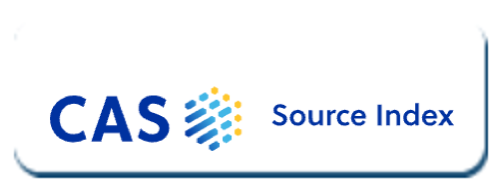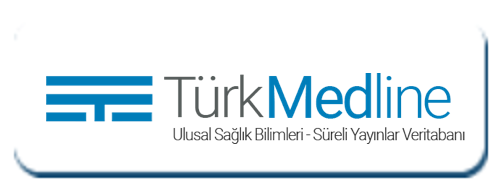Corporal body adiposity (BAI) and abdominal volume (AVI) indices: Relationship with obesity scales in the working population
DOI:
https://doi.org/10.5281/zenodo.10071425Keywords:
Anthropometric indices, Body fat, Obesity, Occupational health.Abstract
Objective: Obesity is a growing pandemic and body mass index (BMI) is insufficient to assess the risk of complications. Other estimates of adiposity are used.
Materials and methods: Cross-sectional study in 193,462 workers. BMI, CUN-BAE (Clínica Universitaria de Navarra Body adiposity Estimator), Cordoba Equation (ECORE-BF), Relative Fat Mass (RFM), Metabolic Score for Visceral Fat (METS-VF) and Palafolls formula. Their correlation with body adiposity index (BAI) and abdominal volume (AVI) was estimated. SPSS 27.0 was used, considering statistical significance p<0.05.
Results: With all scales AVI and BAI are higher in obesity. AVI is higher in men, except with METS-VF. BAI in women has higher values in all scales. The highest values of AVI and BAI are with METS-VF, the lowest with PALAFOLLS. There is a good correlation of BMI with AVI and BAI and with the RFM and METS-VF scales and a very good correlation with Palafolls, ECORE-BF and CUN BAE. AVI and BAI show good correlation with Palafolls, ECORE-BF and CUN BAE and very good correlation with RFM and METS-VF.
Conclusions: AVI and BAI show differences in their values according to sex. With METS-VF, both indexes are higher in men and women. AVI and BAI show good correlation with BMI and RFM. With METS-VF very good correlation with AVI. With the rest of the scales BAI and AVI show moderate or good correlation. The simplicity of these formulas and of both indexes makes them recommendable in clinical practice.
References
Goossens GH. The Metabolic Phenotype in Obesity: Fat Mass, Body Fat Distribution, and Adipose Tissue Function. Obes Facts. 2017;10(3):207-15.
Kaze AD, Erqou S, Santhanam P, Bertoni AG, Ahima RS, Fonarow GC, et al. Variability of adiposity indices and incident heart failure among adults with type 2 diabetes. Cardiovasc Diabetol. 2022;21(1):16.
España. Ley Orgánica 3/2018, de 5 de diciembre, de Protección de Datos Personales y garantía de los derechos digitales. Boletín Oficial del Estado núm. 294, de 6 de diciembre de 2018.
Organización Mundial de la Salud. Clasificación Obesidad. 2023. Disponible on: https://www.enterat.com/salud/imc-indice-masa-corporal.php.
Guerrero Romero F, Rodríguez Morán M. Abdominal volume index. An anthropometry-based index for estimation of obesity is strongly related to impaired glucose tolerance and type 2 diabetes mellitus. Arch Med Res. 2003;34(5):428-32.
Bergman RN, Stefanovski D, Buchanan TA, Sumner AE, Reynolds JC, Sebring NG et al. A better index of body adiposity. Obesity (Silver Spring). 2011;19(5):1083-9.
Mill Ferreyra E, Cameno Carrillo V, Saúl Gordo H, Camí Lavado MC. Estimación del porcentaje de grasa corporal en función del índice de masa corporal y perímetro abdominal: fórmula Palafolls. Semergen. 2019;45(2):101-8.
Woolcott OO, Bergman RN. Relative fat mass (RFM) as a new estimator of whole-body fat percentage - A cross-sectional study in American adult individuals. Sci Rep. 2018;8(1):10980.
Molina Luque R, RomeroS aldaña M, Álvarez Fernández C, Bennasar Veny M, Álvarez López Á, Molina Recio G. Equation Córdoba: A Simplified Method for Estimation of Body Fat (ECORE-BF). Int J Environ Res Public Health. 2019;16(22):4529.
Gómez Ambrosi J, Silva C, Catalán V, Rodríguez A, Galofré JC, Escalada J, et al. Clinical usefulness of a new equation for estimating body fat. Diabetes Care. 2012;35(2):383-8.
Bello Chavolla OY, Antonio Villa NE, Vargas Vázquez A, Viveros Ruiz TL, AlmedaValdes P, Gomez Velasco D, et al. Metabolic Score for Visceral Fat (METS-VF), a novel estimator of intra-abdominal fat content and cardio-metabolic health. Clin Nutr. 2020;39(5):1613-21.
GBD 2019 Diseases and Injuries Collaborators. Global burden of 369 diseases and injuries in 204 countries and territories, 1990-2019: a systematic analysis for the Global Burden of Disease Study 2019. Lancet. 2020;396(10262):1562.
Orozco-Beltrán D, Brotons Cuixart C, Banegas Banegas JR, Gil Guillén VF, Cebrián Cuenca AM, Martín Rioboó E, et al. Recomendaciones preventivas cardiovasculares. Actualización PAPPS 2022 [Cardiovascular preventive recommendations. PAPPS 2022 thematic updates. Working groups of the PAPPS]. Aten Primaria. 2022;54(1):102444.
Visseren FLJ, Mach F, Smulders YM, Carballo D, Koskina KC, Bäck M, et al. ESC Guidelines on cardiovascular disease prevention in clinical practice.Eur Heart J. 2021(42):3227-37.
Arumäe K, Mõttus R, Vainik U. Beyond BMI: Personality traits' associations with adiposity and metabolic rate. Physiol Behav. 2022;246:113703.
Molina Luque R, Yañez AM, Bennasar Veny M, Romero Saldaña M, Molina-Recio G, López González ÁA. A Comparison of Equation Córdoba for Estimation of Body Fat (ECORE-BF) with Other Prediction Equations. Int J Environ Res Public Health. 2020;17(21):7940.
Fuster Parra P, Bennasar Veny M, Tauler P, Yañez A, López González AA, Aguiló A. A comparison between multiple regression models and CUN-BAE equation to predict body fat in adults. PLoS One. 2015;10(3):e0122291.
Davila Batista V, Molina AJ, Fernández Villa T, Romaguera D, Pérez Gómez B, Vilorio Marqués L, et al. On Behalf Of McC-Spain Study Group. The Relation of CUN-BAE Index with Body Mass Index and Waist Circumference in Adults Aged 50 to 85 Years: The MCC-Spain Study. Nutrients. 2020;12(4):996.
Kapoor N, Jiwanmall SA, Nandyal MB, Kattula D, Paravathareddy S, Paul TV, et al. Metabolic Score for Visceral Fat (METS-VF) Estimation - A Novel Cost-Effective Obesity Indicator for Visceral Adipose Tissue Estimation. Diabetes Metab Syndr Obes. 2020;13:3261-7.
Ross R, Neeland IJ, Yamashita S, Shai I, Seidell J, Magni P. Waist circumference as a vital sign in clinical practice: a Consensus Statement from the IAS and ICCR Working Group on Visceral Obesity. Nat Rev Endocrinol. 2020;16(3):177-89.
Downloads
Published
How to Cite
Issue
Section
License
Copyright (c) 2023 Journal of Clinical Trials and Experimental Investigations

This work is licensed under a Creative Commons Attribution 4.0 International License.
![]() The journal is licensed under a Attribution4.0 International (CC BY 4.0).
The journal is licensed under a Attribution4.0 International (CC BY 4.0).











